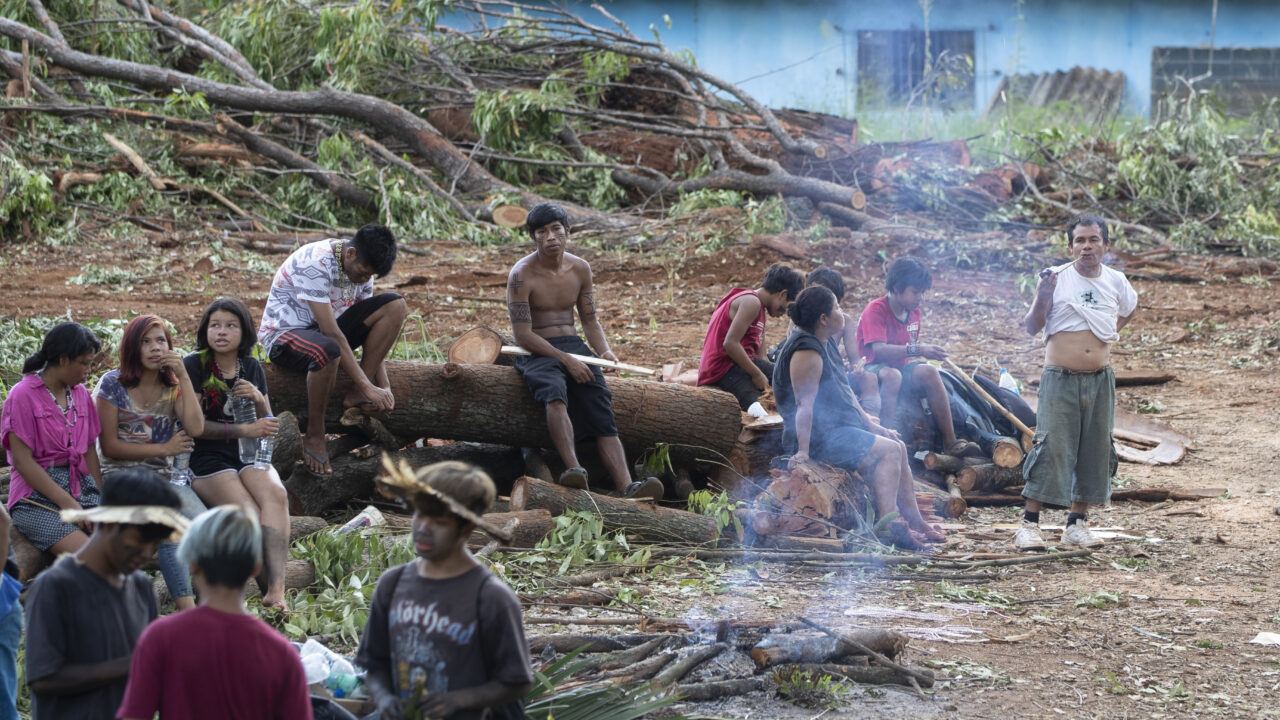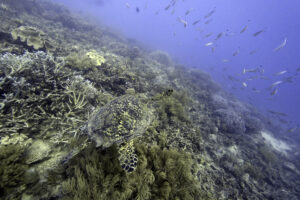Development ‘Threatens Most Indigenous Lands Globally’
New study claims to be the most comprehensive global assessment to date of the threats posed to indigenous peoples’ lands by industrial development. Guarani Mbya protesters occupy land where real estate developer Tenda plans to build apartment buildings, next to their indigenous community's land in Sao Paulo, Brazil, Thursday, Jan. 30, 2020. (AP Photo/Andre Penner)
This is Part of the "Green-Tinted Glasses" Dig series
Guarani Mbya protesters occupy land where real estate developer Tenda plans to build apartment buildings, next to their indigenous community's land in Sao Paulo, Brazil, Thursday, Jan. 30, 2020. (AP Photo/Andre Penner)
This is Part of the "Green-Tinted Glasses" Dig series
Energy infrastructure, commercial agriculture for crops and fuels, mining, and urbanisation are putting intense pressure on indigenous people and their lands worldwide, according to new research published today.
Soaring demand for raw materials from the earth are pushing human activity ever deeper into ecologically intact landscapes, the researchers found. As much as 60 per cent of indigenous lands are currently under threat.
The study was led by scientists from global conservation non-profit The Nature Conservancy (TNC) and published in the journal One Earth.
Pollutants
It harnesses global data and spatial mapping to show that almost 60 per cent of Indigenous Peoples’ lands across 64 countries and all inhabited continents are threatened by industrial development – equivalent to 22.7 million km2.
Expansion of such projects leads to substantial deforestation, toxic pollutants; contagious diseases and rural violence.
Renewable energy is a dominant driver of development pressure, particularly in Australia, parts of China, central Africa, Argentina, the US and Pakistan. It affects 42 per cent of indigenous peoples’ lands, predominantly from solar energy (81 per cent), with wind energy a risk to 13 per cent of lands, and hydropower one per cent.
Oil and gas drive 18 per cent of industrial development, especially in Russia, Norway, Ecuador, Guatemala, Paraguay and New Zealand; while commercial agriculture for crops and biofuels is putting pressure on 14 per cent of land, spread over 14 countries, including the Democratic Republic of Congo, India, Indonesia, Vietnam and Nepal.
Mining for coal, metallic and non-metallic resources is a risk to nine per cent of indigenous peoples’ lands, concentrated in around 12 countries including Peru, Sweden, El Salvador and Costa Rica.
Expansion of such projects leads to substantial deforestation, toxic pollutants; contagious diseases and rural violence, the researchers noted. Urbanisation was found to be the dominant threat to four per cent of indigenous peoples’ land globally.
Rights
Despite comprising only 6.2 per cent of the global population, indigenous peoples formally or customarily govern at least one-quarter of the world’s terrestrial surface.
Indigenous people’s lands account for 39 per cent of the earth’s most ecologically intact lands.
The vast majority – about 92 per cent, or 35.4 million km2 – of indigenous peoples’ lands remain in good to moderate condition due to their care. As such, indigenous people’s lands account for 39 per cent of the earth’s most ecologically intact lands.
Scientists and environmental and human rights campaigners have identified the recognition and upholding of indigenous peoples’ rights as central to efforts to protect biodiversity and mitigate climate change. As such, these rights were enshrined within the UN Kunming-Montreal Global Biodiversity Framework agreed in Canada last December.
However, indigenous people confronting development proposals face substantial challenges, including weak rights to territories and resources; inadequate opportunities for representation and engagement in decision making, and lack of finance to support conservation, the researchers found.
The findings of the study underscore the need to accelerate collaborative actions and rights-based approaches to relieve these tensions, the researchers said.
Mapping
The researchers also noted a growing number of successful examples of equitable, inclusive, and indigenous-led approaches to conservation.
For example, in the Peruvian Amazon, TNC has been working with communities to produce what it calls Quality of Life maps, which includes information about the land owned by the indigenous people, such as what they have in their territories and what they had historically, and also how they want to use these territories, according to Luis Dávalos, TNC’s Peru infrastructure coordinator.
It also sets out the strengths of the community, the threats to the community, and any funding opportunities. “They use the tool to defend their territories and also to negotiate with the government in the formal budget process,” he explained.
Quality of Life maps have already helped indigenous communities in Peru to defend their land against the IIRSA Centre Road Project being built to link the city of Pucallpa to Cruzeiro do Sul in Brazil in 2014/15, Dávalos said.
Empower
The indigenous people travelled to Lima to meet the Peruvian government, and successfully blocked the project, he said.
TNC is now hoping to replicate the project with 14 communities around the Marañon river, which flows into the Amazon, which is threatened by a series of hydropower projects and roads.
“When you create these tools, you empower people – it’s not only the data that you get from the tool, but also the process that allows us to empower local people, leaders, women, and local people in general,” he said.
The study was conducted alongside Charles Darwin University, Universitat Autònoma de Barcelona, Manchester Metropolitan University, and TRAFFIC.
Your support matters…Independent journalism is under threat and overshadowed by heavily funded mainstream media.
You can help level the playing field. Become a member.
Your tax-deductible contribution keeps us digging beneath the headlines to give you thought-provoking, investigative reporting and analysis that unearths what's really happening- without compromise.
Give today to support our courageous, independent journalists.





You need to be a supporter to comment.
There are currently no responses to this article.
Be the first to respond.